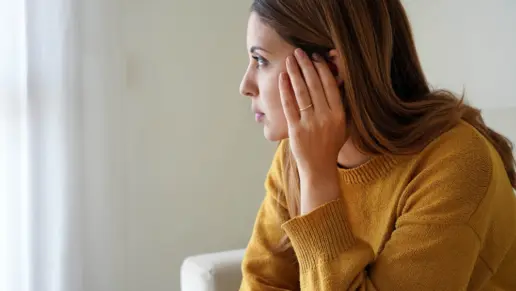Benzodiazepines (often shortened to benzos) are depressant drugs with hypnotic and relaxing properties. Benzos are used to treat patients with sleep disorders, relieve anxiety, and reduce seizures but can also be obtained illegally for substance abuse. Benzos are generally safe to use when prescribed by a doctor and taken for a limited time, but they are potentially addictive and dangerous when used long-term.
In the U.S., benzodiazepine addiction is an increasing problem and has been for some time. In 2013, benzodiazepines were involved in 31% of the 22,767 fatal overdoses. This problem has continued to grow. Still, the risks associated with benzodiazepine abuse are often overshadowed in the news by a focus on the opioid addiction epidemic. We will provide information and guidance to help you to understand how benzos are misused, what it means to be addicted, and the available treatment options.
What Are Benzodiazepines & What Are They Used For?
 Benzodiazepines are psychoactive tranquilizers developed as a replacement for barbiturates, a popular treatment for insomnia in the 1960s and 1970s. Benzos were marketed as a safer alternative to barbiturates, which are highly addictive with unpleasant side effects. However, benzos also have side effects and the potential for addiction but on a lesser scale than barbiturates. Since they were first introduced, benzodiazepines have become one of the most commonly-used prescription drugs.
Benzodiazepines are psychoactive tranquilizers developed as a replacement for barbiturates, a popular treatment for insomnia in the 1960s and 1970s. Benzos were marketed as a safer alternative to barbiturates, which are highly addictive with unpleasant side effects. However, benzos also have side effects and the potential for addiction but on a lesser scale than barbiturates. Since they were first introduced, benzodiazepines have become one of the most commonly-used prescription drugs.
Benzodiazepines usually come in the form of a pill or tablet and are classified as a Schedule IV substance by the Drug Enforcement Administration (DEA). Schedule IV means benzos have a low potential for abuse and a low risk of dependence. Despite this, concerns have been raised about the use of benzodiazepine and its potential for abuse. As a result, the U.S. Food and Drug Administration (FDA) requested that the warning on benzodiazepine boxes be revised to acknowledge the severe risks and harms associated with the medication.
When sourced illegally, benzodiazepines have many street names, some of which are based on the brand names, such as “Xannies” for Xanax and “Blue V’s” for Valium. Other more generic street names include downers, tranks, and nerve ills.
How Do Benzos Work?
Benzodiazepines work on one of the three brain receptors (A, B, and C) for gamma amino butyric acid (GABA), the most common neurotransmitter in the central nervous system (CNS). After taking benzos, this neurotransmitter interacts with the GABA-A receptor and has the calming effect of reducing brain activity.
Due to their calming effect on the brain, benzos are prescribed for many conditions with unwanted brain activity. These include sleep conditions such as insomnia and narcolepsy, seizures associated with conditions such as epilepsy, and anxiety. In addition, there’s substantial evidence that benzos can be effective in treating alcohol withdrawal.
Benzodiazepines have addictive properties as they cause the release of dopamine in the brain. Dopamine is a hormone responsible for the feelings of pleasure and reward experienced after taking benzos. This cycle of taking a drug and feeling rewarded for it leads to the user wanting to take more to replicate their experience. Over time, the brain can rely on benzos to cause a surge in dopamine and no longer produces it naturally. Reduced dopamine levels can lead to depression and other mental disorders.
Types of Benzodiazepines
Benzodiazepine medications are used to treat different disorders. The most suitable for a given condition depends on several factors, including half-life. A medication’s half-life refers to how long it takes for half of the dose to be eliminated from the blood. Half-life length depends on how quickly the substance is absorbed and the extent of distribution in the body. The Ashton Manual (official title: Benzodiazepines: How They Work and How to Withdraw), written by Professor Heather Ashton, has been well used to help patients withdraw from benzos. The book includes a table of the half-life of various benzos. Half-life falls into three categories:
- Ultrashort half-life benzos: These have a half-life of up to 5 hours. Halcion (triazolam) has a half-life of between 1.5 and 5 hours. These benzos are often used to treat insomnia as they are active in the body for between 3 and 10 hours, so their effects are less likely to continue into the following day.
- Intermediate and short-acting benzos: These have a half-life of between 5 and 24 hours. Xanax (alprazolam) is a well-known brand name of benzos that falls within this category. It is used to treat anxiety disorders and depression-related anxiety.
- Long half-life benzos: These have a half-life of 24 hours or more; sometimes, this can be 100s of hours. These benzos are often used to treat conditions that require long-term management, such as chronic insomnia, rather than short-term bouts of insomnia. For anxiety or seizures, the benzo needs to be active for more extended periods throughout the day; therefore, long-half-life benzos can be prescribed to treat these conditions. An example of long-acting benzo is Dalmane (flurazepam), which has an extraordinarily long active half-life of up to 11 days.
Other examples of benzodiazepines and some of their prescribed uses are:
Sleep Disorder Treatments
- Klonopin (Clonazepam)
- Ativan (Lorazepam)
- Restoril (Temazepam)
Anxiety Disorder Treatments
- Valium (Diazepam)
- Klonopin (Clonazepam)
- Librium (Chlordiazepoxide)
Seizure Treatments
- Rivotril (Clonazepam)
- Onfi (Clobazam)
- Ativan (Lorazepam)
Alcohol Withdrawal Treatment
- Valium (Diazepam)
- Librium (Chlordiazepoxide)
- Serax (Oxazepam)
Who Uses Benzodiazepines?
In 2008, a study was conducted to identify the demographic of those that use benzos in the U.S. Key findings included that approximately 5.2% of U.S. adults aged 18 to 80 used benzodiazepines. Benzo use increased incrementally with age from 2.6% at age 18-35 to 8.7% at age 65-80.
Furthermore, long-term benzo use (often defined as not less than three consecutive months) also increased with age, with twice as many people using them long-term at age 65-80 years (31.4%) in comparison to 18-35 years (14.7%). Women were also nearly twice as likely to use benzos than men. More recently, the National Survey on Drug Use and Health (NSDUH) 2020 identified the same trends.
Why Do People Use Benzos?
There are two main reasons why someone uses benzos. The first is that they need them for a medical reason, so they have been prescribed, and the second is that they are using them recreationally. Some users will migrate from medicinal to recreational use once they have developed a dependency on the substance.
Medicinal Use of Benzos
Many people use benzos because they have a recognized medical condition and have been prescribed benzodiazepines to treat it. Benzodiazepines have many pharmacologic uses and are often found to be the most effective drug available to treat certain conditions. For example, in comparison to serotonergic antidepressants, benzos were more effective in treating adults with Generalized Anxiety Disorder (GAD). Sometimes, benzodiazepines are a practical choice for those who suffer from comorbidity health conditions, such as a substance use disorder and a co-occurring mental health condition. When someone has an alcohol addiction and anxiety, their doctor may be able to prescribe a benzodiazepine that can treat both conditions simultaneously.
Recreational Use of Benzos
The effects of benzodiazepines are similar to alcohol as both substances affect the same parts of the central nervous system. They slow down the brain and make the user feel more at ease. As a result of this, some people use benzos in place of alcohol to feel relaxed. Benzos can be cheaper than alcohol, as one pill can last for hours. Even when obtained illegally, benzos can often be bought for less than $10, more affordable than an evening’s worth of alcoholic drinks.
A further reason is to enhance the effect of other drugs. A National Library of Medicine study found that users reported seeking benzodiazepine prescriptions to enhance opioid intoxication or “high” and obtain doses that exceed the therapeutic range.
Users may try benzos for the first time on the recommendation of friends or because they are curious about what will happen. When substance abuse is normalized, it can be easy to underestimate the potential dangers and the risk of becoming addicted.
How Does Someone Become Addicted to Benzodiazepines?
It is easy to become addicted to benzos. A University of Michigan (U-M) study found that one in four older adults prescribed a benzodiazepine goes on to risky long-term use. Long-term use can lead to addiction as the user can develop benzodiazepine dependence. For this reason, physicians are cautious about prescribing benzos long-term. The same U-M study also identified that for every ten additional days of medication prescribed, a patient’s risk of long-term use nearly doubled over the next year.
When someone uses benzos long-term, they can develop an addiction to it. Dependence can be physical or psychological. Physical dependence makes changes to your body and your brain. You may develop physical withdrawal symptoms and find that the only way to relieve them is to take more benzos. Psychological addiction is when you cannot cope without the substance. The National Institute of Drug Abuse reports that the reasons given for the recent misuse of benzos by individuals in one particular study were as follows:
- Relieve tension or relax: 46.3%
- Help with sleep: 22.4%
- To get high or because they were hooked: 11.8%
- Experimentation: 5.7%
What Are the Risks of Benzo Addiction?
All forms of substance abuse have risks associated with long-term use. These can be risks to the user’s health or detrimental effects on their life and general well-being. In the case of benzos, the side effects and withdrawal symptoms are manageable when they are taken in the prescribed dose for the prescribed length of time. When benzos are taken in high doses or for an extended period, users can suffer from prolonged and enhanced withdrawal symptoms and long-term health implications. The Centers for Disease Control and Prevention (CDC) reported that prescription and illicit benzo overdoses are rising as fatal and nonfatal benzodiazepine overdoses increased from 2019 to 2020. Examples of some of the short and long-term risks associated with use of benzodiazepines are:
Short-term Side Effects of Benzos
- Short-term memory loss
- Mood swings
- Erratic behavior
- Blurred vision
- Confusion
- Excessive drowsiness
- Slurring
- Weakness in muscles
- Shallow breathing
- Reduced motor skills
In addition, some side effects of benzodiazepines are more prevalent in certain users:
- People over 80: There is an increased risk of falls leading to injury for elderly users of benzos. Studies have shown that short-acting benzos are less likely to be associated with falls and hip fractures, so they are more frequently prescribed to older adults than long-acting benzos.
- Pregnant people: Benzo use during pregnancy increases the risk of premature birth and low birth weight.
Health Risks of Long-term Use of Benzodiazepines
When benzos are taken for an extended period, users report a number of withdrawal symptoms, some of which are related to the condition or conditions they were being treated for, such as insomnia and anxiety, and others that include:
Physical Effects of Long-term Benzo Use
- Headaches
- Sweating
- Heart palpitations
- Tremors
- Muscle pain
- Nausea and diarrhoea
Psychological Effects of Long-term Benzo Use
- Anxiety and depression
- Panic attacks and panic disorder
- Irritability
- Being unable to concentrate
- Feelings of confusion
- Lack of emotions and a feeling of dullness
- Feeling isolated and unconfident
- Dizziness
- Tinnitus
- Hallucinations
- Memory problems, including substance-induced anterograde amnesia
- The inability to assess risk leads to poor decision-making and risky behavior.
The effect on the brain of long-term use of benzos is particularly concerning. Studies have shown that cognitive dysfunction occurs in patients treated long-term with benzodiazepines. Even once benzos were withdrawn, patients did not return to the same level of functioning as those who had not been treated with benzos.
Benzodiazepine Overdose
A recently updated study identified that when benzodiazepines are ingested alone, they are rarely associated with a poor outcome. However, in the case that an overdose occurs, the user will likely display signs of benzo toxicity and central nervous system (CNS) depression. This causes a decreased heart rate, breathing rate, and potentially a loss of consciousness. Although, in the case of a benzo overdose, sufferers are usually still conscious or arousable.
The greater risk of overdose leading to long-term health complications or death comes when benzos are taken alongside other substances. The National Institute on Drug Abuse reported that between 1999 and 2017, overdose deaths involving benzodiazepines steadily increased from 1,135 to 11,537. Many of these deaths involved other substances, such as:
- Benzos and alcohol: One of the most common and dangerous combinations is when someone takes benzos and alcohol simultaneously. As depressants, alcohol, and benzos together can cause difficulty breathing, damage the brain, heart, and other organs, and death.
- Benzos and stimulants: Some users may think they can cancel out the effect of stimulants by taking depressants such as benzos or vice versa. In reality, though, there is no way of knowing how the drugs will react with each other. Also, as they can mask each other’s effects, it is easy to be unaware of the impact they are having, take more, and overdose.
- Benzos and opioids: Opioids, such as methadone, are also depressants. As both substances can cause sedation and slow breathing, respiratory failure, and potentially death are highly likely to occur when the two drugs are used simultaneously. In 2020, 16% of overdose deaths involving opioids also involved benzodiazepines.
Other Risks Associated With Benzodiazepine Misuse
Due to benzos’ effect on the brain, users may find that they are more likely to partake in potentially dangerous behavior. Examples include:
- Drugged driving: Vehicle crashes, dangerous driving, and getting into trouble with the Police can result from driving after taking benzos. As benzos cause drowsiness and impair cognitive functioning, including the ability to think and judge situations clearly, they can cause vehicle crashes.
- Paradoxical reaction: Although benzos are often prescribed for their sedative effect, sometimes they can have the opposite reaction. Although rare (less than 1% of users), benzodiazepine has been shown to generate aggressiveness more frequently than it reduces it. This can lead to involvement in physical aggression and involvement in violent incidents.
- Risk of suicide: Benzodiazepine use appears to cause an overall increase in the risk of attempting or completing suicide. Possible reasons include increased impulsivity, aggression, and suffering intense withdrawal symptoms.
Signs and Symptoms of Benzodiazepine Addiction
Benzodiazepine addiction is not necessarily as apparent as other drug abuse. Many users of benzos do not realize or want to acknowledge that they have become addicted to their medication. This can be because they believe that they cannot cope without it.
Also, as the side effects are often manageable, they may not be aware of the impact of benzos on their lives and those around them. Many withdrawal symptoms are psychological rather than physical, meaning that you need to look out for behavioral changes rather than physical ones. Examples of the signs that you can look out for are:
- Mood changes: Benzo use and the subsequent withdrawal symptoms can cause a person to be more irritable than usual. They may become confrontational or display rapid mood swings.
- Lethargy: As a depressant, benzos are used to sedate the body, which can cause a person to become especially drowsy and lethargic. They may oversleep or lose interest or motivation in activities that they previously enjoyed.
- Uncommunicative: When someone has a benzodiazepine addiction, they may fear being judged or criticized for their actions. In order to avoid this situation, they may distance themselves from friends and family, and it can become challenging to hold a conversation with them.
- Declining performance at work or school: When someone’s benzo use has become a dependency, they may find it difficult to focus on or commit to anything else. They may become preoccupied as they are feeling unwell due to withdrawal symptoms or are experiencing cravings to take more of the substance.
- Financial problems: Although benzos are relatively inexpensive, mainly if obtained by prescription with insurance, regular ongoing use can still add up. Struggling with money can be a sign that someone is spending their money on drugs.
- Increasing use: As someone uses more of a substance, they develop a tolerance to it. The user may need to take higher doses of benzodiazepines or use them more frequently to obtain the desired effect.
- Seeing multiple doctors: It is recommended that benzos are only prescribed in durations of no more than a few weeks to reduce the risk of addiction and long-term health implications. As physicians are usually reluctant to prescribe benzos long-term, some users will see multiple doctors in order to obtain a larger supply.
- Being unable to stop: If you or your loved one has tried to stop or reduce your use of benzos but failed to, this is a sign that you have developed an addiction and need professional help to overcome it.
Is It Possible To Receive Treatment for Benzodiazepine Addiction?
Treatment programs to assist those with a dependency on benzos are widely available across the U.S. The most suitable treatment options will depend on the patient’s circumstances, including which benzo or benzos they are using, how long they have been using them, and in what quantities. As a general rule, the treatment plans on offer will involve some or all of the following:
- Detox: Detoxification from benzos must be managed carefully, as abruptly stopping the drug can cause severe withdrawal symptoms and sometimes potentially dangerous seizures. Benzodiazepines are linked to generalized tonic-clonic seizures (GTCS or grand mal seizures), which can cause coma or even death. To avoid these risks, medical professionals manage the process carefully and often recommend that patients taper off benzos slowly by reducing the dose gradually.
- Medication: Individuals withdrawing from benzodiazepines may be offered flumazenil. Flumazenil is a benzodiazepine antagonist and is an effective approach to treating benzodiazepine overdosing and detoxification.
- Inpatient and outpatient treatment: Many treatment centers offer residential or outpatient treatment for addiction to benzos. Available programs often incorporate a variety of treatments, including behavioral therapies, counseling, and holistic approaches such as meditation. It has been identified that many patients who take benzos long-term for conditions such as anxiety have not ever received any evidence-based first-line treatments such as psychotherapy and relaxation techniques. By offering these treatments, healthcare providers can address the benzo addiction and why someone started taking them in the first place.
- Relapse prevention treatment: Treatment plans should have a relapse prevention plan to ensure the patient’s long-term sobriety. The relapse rate for those with benzo addiction depends on the severity of the addiction. Often there can be a rebound effect whereby the original condition being treated, such as anxiety or insomnia, returns once the benzodiazepine withdrawal is complete. The most common “rebound” occurs within 1-4 days of discontinuing use.
Still, as the patient is likely under the care of a medical professional at this time and the symptoms are short-lived, it is often possible to manage this situation without returning to benzos. Some people experience full-blow withdrawal symptoms, usually lasting 10-14 days, requiring more monitoring and management. Some experience a complete return to their original condition requiring a different treatment form altogether.
Where Can I Find Benzodiazepine Addiction Treatment?
We can help to find the most effective benzo addiction treatment for you. Some suggested starting points for reliable and trusted advice are:
- SAMHSA (Substance Abuse and Mental Health Services Administration) National Helpline: This 24/7 resource provides information about the treatment options available to you at 1-800-662-HELP (1-800-662-4357).
- Rehab.com: Call one of our treatment coordinators confidentially today at 1-888-702-1717 to find out more about your treatment options. Alternatively, visit our website, where you can search for benzo rehabs in your local area.
- Your doctor: As many people start using benzos via prescription, your doctor is a good source of advice and information about how to withdraw from benzos and where to receive the professional support that you need.
- Support groups: There are many support groups available across America that can assist you in recovery from benzodiazepine addiction. Narcotics Anonymous is just one example of a well-respected network of peer support groups.
Addiction to benzodiazepine can affect anyone. It is very common to start taking them for medical reasons and then find yourself unable to stop. Many treatment providers are very experienced and knowledgeable when it comes to assisting those with a benzo addiction to break the cycle of use. If you are concerned that you, or a loved one, has an addiction to benzos, it is time to act by seeking professional advice. Full recovery from benzodiazepine addiction is possible, and rehab.com is here to help you to take the first step toward a life free from addiction.




